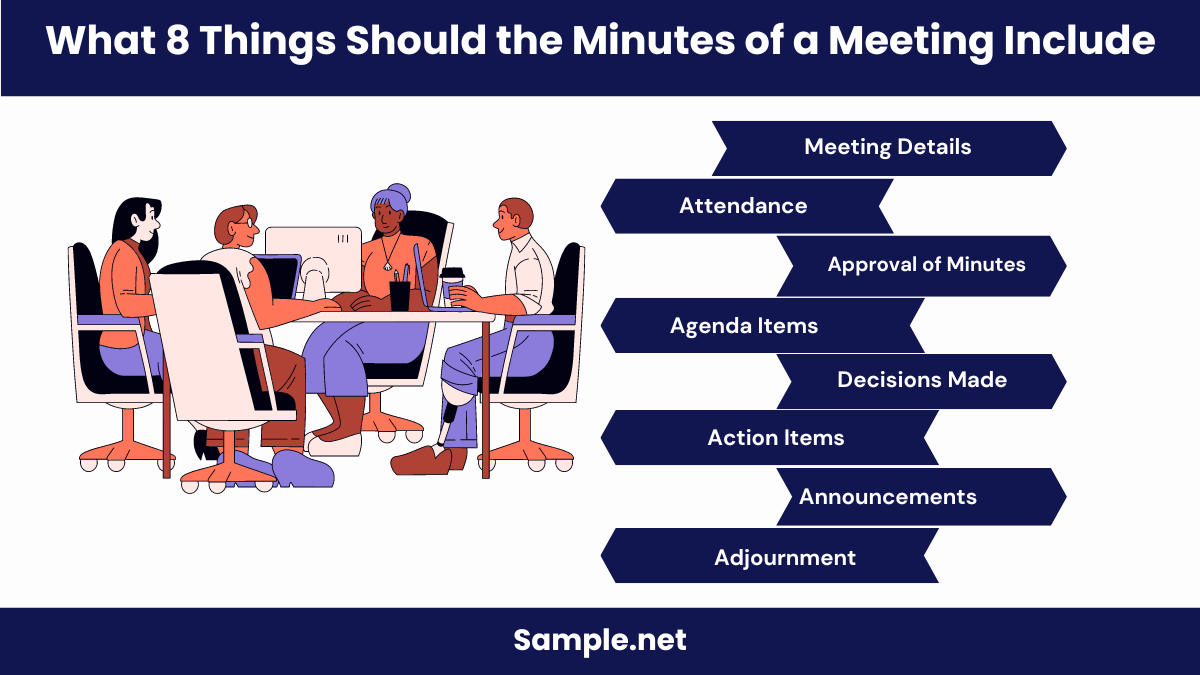Office Meeting Minutes Samples
-
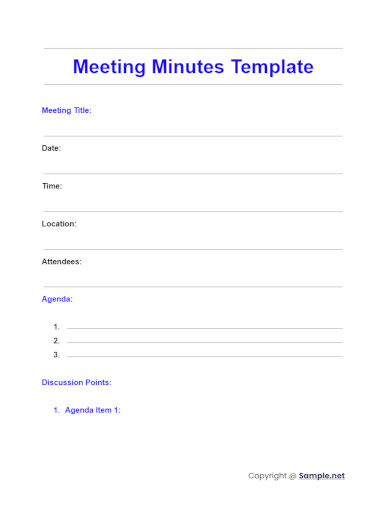
Meeting Minutes Template
download now -
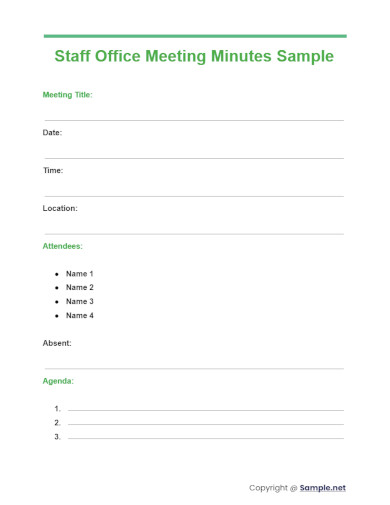
Staff Office Meeting Minutes Sample
download now -
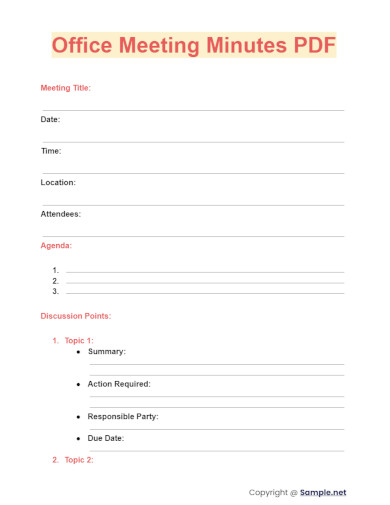
Office Meeting Minutes PDF
download now -
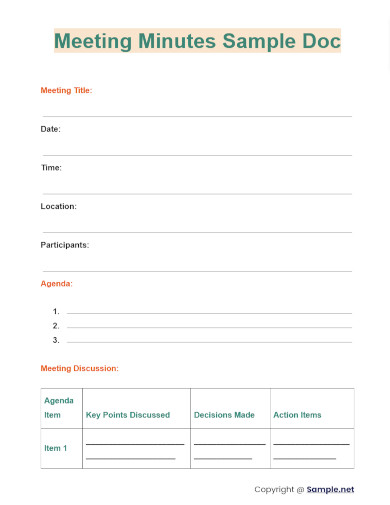
Meeting Minutes Sample Doc
download now -
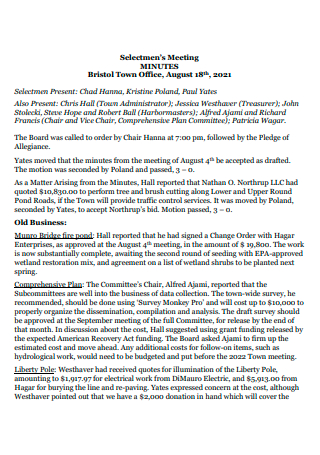
Office Meeting Minutes Template
download now -

Port Office Regular Meeting Minutes
download now -
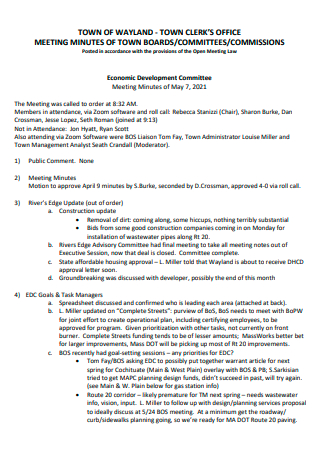
Clerks Office Meeting Minutes
download now -
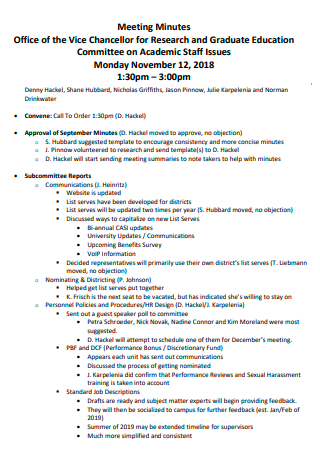
Office of the Vice Chancellor Meeting Minutes
download now -
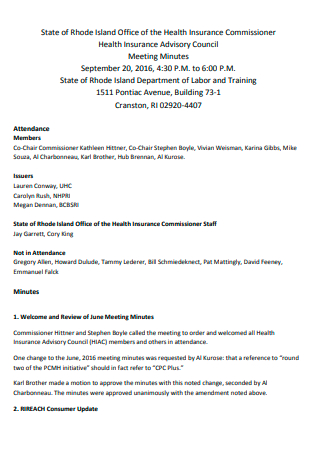
Office of Health Insurance Meeting Minutes
download now -
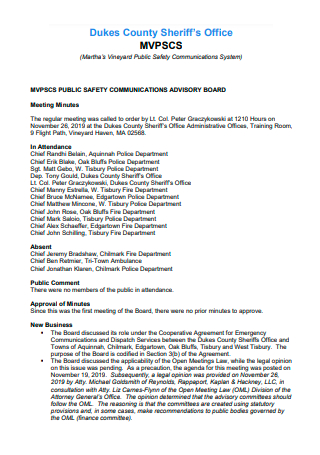
Office Meeting Minutes in PDF
download now
FREE Office Meeting Minutes s to Download
Office Meeting Minutes
Office Meeting Minutes Samples
What Are Office Meeting Minutes?
What Is the Purpose of Meeting Minutes?
What Is the Agenda of the Meeting?
What Should be Included in Meeting Minutes?
Distributing the Meeting Minutes
Tips in Taking Meeting Minutes
How to Write Office Meeting Minutes
How Are the Minutes of a Meeting Pronounced?
What Is the Best Template Format for Meeting Minutes?
What Tense Should be Meeting Minutes be Written In?
How to Write Minutes of Meeting in Office?
What 8 Things Should the Minutes of a Meeting Include?
What Are Three Things to Avoid in a Meeting Minute?
How Do You Take Minutes for a Work Meeting?
What Should Not Be Included in Meeting Minutes?
How a Secretary Should Write Minutes in a Meeting?
What is the 10 10 10 Rule for Meetings?
Do Meeting Minutes Need to Be Formal?
What is the 3 Minute Rule for Meetings?
What is the Proper Format for Minutes of a Meeting?
What Do Good Minutes of a Meeting Look Like?
Is It Better to Write or Type Meeting Minutes?
What Happens If the Minutes of a Meeting Are Not Accurately Taken?
Should Names Be Mentioned in Minutes?
Download Office Meeting Minutes Bundle
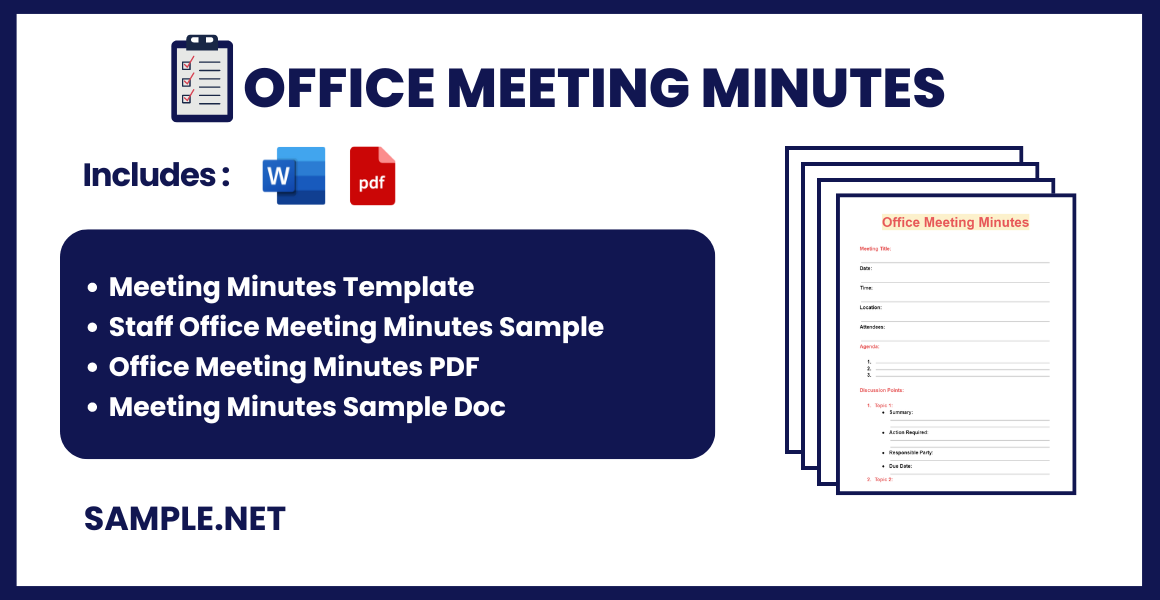
Office Meeting Minutes
Header
- Meeting Title: [Title of the Meeting]
- Date and Time: [Date and Time of the Meeting]
- Location: [Location of the Meeting]
- Attendees: [List of Attendees]
- Apologies: [List of Absentees]
Agenda
- Agenda Item 1: [Brief Description]
- Agenda Item 2: [Brief Description]
- Agenda Item 3: [Brief Description]
Minutes
- Agenda Item 1:
Discussion: [Details of Discussion]
Action Items: [Assigned Tasks and Deadlines] - Agenda Item 2:
Discussion: [Details of Discussion]
Action Items: [Assigned Tasks and Deadlines] - Agenda Item 3:
Discussion: [Details of Discussion]
Action Items: [Assigned Tasks and Deadlines]
Conclusion
- Next Meeting: [Date and Time of Next Meeting]
- Adjournment: [Time of Adjournment]
Signature
- Minute Taker: [Name]
- Approval: [Name, Title]
What Are Office Meeting Minutes?
Office meeting minutes are detailed notes taken during a meeting to document the discussions, decisions, and action items. They serve as an official record, ensuring that all participants are on the same page and can refer back to what was discussed. Accurate meeting minutes are crucial for accountability and follow-up actions.
What Is the Purpose of Meeting Minutes?
The term “minutes” should not be frightening to you because it is a little deceptive. After all, your committee or board of directors doesn’t want or need a minute-by-minute account of its meetings! The spirit of the meeting, including details such as choices made (motions made, votes cast, etc. ), next steps to be done, and action items defined and documented, must be preserved. For those who were present, minutes serve as a physical record of the meeting, as well as a source of information for those who were unable to attend. In some cases, such as when the outcomes of a meeting have an impact on subsequent collaborative activities or initiatives inside the company, meeting minutes can be used as a reference point. They can also be used to inform (or remind) employees of their responsibilities and/or deadlines.
What Is the Agenda of the Meeting?
Obtain a copy of an effective meeting agenda and use it as a reference or blueprint for taking notes, setting up your MOM format, and creating the minutes – making sure that the order and numbering of things on the minutes of meeting correspond to the order and numbering of topics listed on the agenda. Additionally, the agenda and/or meeting notice include information that will need to be included in the minutes, such as the names of all meeting attendees, including visitors and speakers, as well as the date and time of the meeting.
Handouts that are sent out with the agenda or handed out during the meeting – copies (either digitally or physically) of handouts should be stored with the meeting minutes for future reference and to be shared with those who were unable to attend the meeting (as well as others as determined by the meeting Chair).
Expectations Should be Clarified as Follows:
In the event that you are taking on a new role as minutes-taker or secretary, make sure to ask the Chair of the committee/board what he/she wants from your role during the meeting, as well as what level of information he/she expects in the minutes before beginning your duties. When dealing with motions or voting on items/issues, for example, make it clear whether you need to provide the names of people who are making the motions, seconding them, or otherwise participating in the voting process. If you will be dealing with this type of procedure, you (as well as your Chair) may want to consult Robert’s Rules of Order before proceeding. You should also take a look at our Event Meeting Minutes
What Should be Included in Meeting Minutes?
Before beginning to record any details, a designated minutes recorder should become acquainted with the types of information that they will be required to record. Although a particular method for taking notes may be preferred by a group, the minutes of a meeting normally include the following information:
- The date and time of the meeting were recorded
- Participants’ names, as well as the names of those who were unable to attend
- Acceptance of the minutes of the previous meeting, or modifications to the minutes of the previous meeting
- Each item on the agenda has decisions made regarding it, such as activities undertaken or agreed upon, Election results, as well as Motions that are either accepted or denied.
- Starting a new business is an exciting prospect. The date and hour of the next meeting will be announced soon. You should also take a look at our Research Meeting Minutes
Distributing the Meeting Minutes
Following completion of the minutes by the secretary, he or she is responsible for distributing them to the other members of the organization. Their contents can be shared via the internet or through the cloud. Considering how many paper minutes and other types of papers can generate, a paperless sharing solution may be ideal. The minutes’ recorder should consider switching from Microsoft Word, which does not allow for online document sharing, to Google Docs, which has an online file sharing system. Additionally, a copy of the meeting minutes is meant to be kept on file by the recorder for future reference as well. Minutes are often kept on Google Docs or OneDrive by the vast majority of corporations. You should also take a look at our Grievance Meeting Minutes
Tips in Taking Meeting Minutes
Taking down the minutes of the meeting can be easy as 1,2,3. By following a simple procedure can guarantee quality-based minutes of the meeting. Here are some tips for you to recognize in taking meeting minutes.
How to Write Office Meeting Minutes
Everyone on the team is working 12-hour days, you were required to submit your own patient accountability reports yesterday, and you made plans with your best friends for a night out on Friday. How do you hold the necessary staff meeting to guarantee that everyone receives what they require – and in record time? The same methods apply whether you’re working with a time restriction and a stressed-out crew or organizing your nurses meeting minutes during a period of regular downtime.
1. Take Minutes in Real-Time
Begin by sketching down an outline of the meeting agenda. Fill in the blanks with additional information about agenda items while the material is still fresh in your mind—in real-time.
2. Be Concise
Your creative writing abilities will have to take a backseat (for now). Write the minutes as if you were a reporter for a newspaper. Take notes on what is going on during the meeting. However, only the broad strokes have been recorded in writing. You do not require a verbatim transcript of all that has been said.
3. Fill in the Meeting Minutes Documents
When it comes to writing minutes, there is a delicate balancing act to be performed. Although it is important to keep minutes succinct, you must also offer sufficient background for future reference. Remember that it’s common practice to go over meeting notes at the start of the next meeting, so be prepared. For example, the approval of the minutes from the previous meeting is often the first item on the agenda of a board meeting. As a meeting note-taker, you must make a judgment call about how much context to offer. You should also take a look at our Training Meeting Minutes
4. Just Note the Facts
When preparing meeting minutes, stay away from making personal observations. If you wish to make separate notes for yourself, it is very acceptable to me. However, the minutes of the meeting should be a true record of what was discussed.
5. Use Meeting Minutes in a Right Format
If you’re drafting formal meeting minutes, there’s a specific format you should follow. In the case of labor unions, schools, municipal and county governments, and other organizations. However, with informal meeting minutes, you have a greater degree of flexibility. Consider what your company requires, as well as what has been done in the past. Then iterate on that process to make it better.
Examples of both forms of meeting minutes have been provided for the visual learner. Alternatively, you may skip ahead to our templates by scrolling a little farther down the page. To help you write, refer to this list of resources. It’s important to realize that the information needed for your meetings may differ from this. If you get caught up in copying the samples, you may forget to write your meeting minutes in a way that is valuable to both you and your team members. You should also take a look at our Risk Management Meeting Minutes
How Are the Minutes of a Meeting Pronounced?
Despite the fact that the word “minutes” comes from the concept of something being little or my-newt, meeting minutes are pronounced the same way as the word for a minute of time in English. In order to say, “Please take minutes for this meeting,” you would pronounce the term in the same manner that you would say, “There are sixty minutes in an hour.” You should also take a look at our Office Checklist
[/ns_row]
What Is the Best Template Format for Meeting Minutes?
The most crucial element to consider when choosing a file type for your meeting is how you will preserve and share your minutes. Using or sharing standard files like Word docs, Excel spreadsheets, and PDFs requires an extra step. These file types require a special program to open, which not everyone has. Regular files like Word Docs and PDFs must also be kept carefully in the cloud to avoid different versions of the same material being in dispute. Meeting minutes are frequently emailed, but this is not the only place they live. The minutes should be saved centrally so they can be found later. The ideal approach is often a Google Doc or other cloud-based document. It’s even better in a free meeting management system like Hugo where notes can be readily shared (or kept a secret). You should also take a look at our Office Action Plan
What Tense Should be Meeting Minutes be Written In?
Meeting minutes are a record of the meeting. They should read like a history book, not like a sports commentator announcing a game live. You should also take a look at our Office Agreement
How to Write Minutes of Meeting in Office?
Writing minutes of a meeting in an office setting involves capturing key details accurately and concisely for future reference.
- Prepare Ahead: Review the agenda and familiarize yourself with the topics.
- Attend the Meeting: Be present and attentive throughout the meeting.
- Record Key Points: Note decisions, action items, and important discussions.
- Structure Clearly: Organize the minutes with headings, bullet points, and timestamps, similar to Group Meeting Minutes.
- Review and Distribute: Proofread the minutes and distribute them to attendees promptly.
What 8 Things Should the Minutes of a Meeting Include?
Effective meeting minutes should comprehensively cover the key aspects of the meeting.
- Meeting Details: Include the date, time, location, and type of meeting, such as Community Meeting Minutes.
- Attendance: List all attendees, absentees, and special guests.
- Approval of Previous Minutes: Note if the previous meeting’s minutes were reviewed and approved.
- Agenda Items: Summarize discussions on each agenda item.
- Decisions Made: Document any decisions or resolutions passed.
- Action Items: Record tasks assigned, responsible parties, and deadlines.
- Announcements: Include any important announcements or updates.
- Adjournment: Note the time the meeting concluded. You should also take a look at our Office Cleaning Proposal
What Are Three Things to Avoid in a Meeting Minute?
Certain elements should be excluded from meeting minutes to maintain professionalism and clarity.
- Personal Opinions: Avoid inserting personal views or subjective comments.
- Irrelevant Details: Skip unimportant side conversations or off-topic discussions.
- Inaccurate Information: Ensure all recorded details are accurate and factual, akin to Management Meeting Minutes.
How Do You Take Minutes for a Work Meeting?
Taking minutes for a work meeting involves structured note-taking and clear documentation of discussions and decisions.
- Use a Template: Start with a pre-made template to ensure consistency and completeness.
- Be Objective: Record facts without bias, similar to Monthly Meeting Minutes.
- Focus on Key Points: Capture decisions, action items, and critical discussions.
- Organize by Agenda: Follow the meeting agenda to structure your notes.
- Summarize Effectively: Write concise summaries of discussions without losing essential details.
What Should Not Be Included in Meeting Minutes?
Certain elements should be omitted from meeting minutes to keep them professional and focused.
- Personal Opinions: Exclude subjective opinions or personal comments.
- Sensitive Information: Avoid including confidential or sensitive information.
- Side Conversations: Do not record irrelevant discussions.
- Verbatim Dialogues: Skip detailed verbatim records; focus on summaries.
- Speculations: Avoid speculative or unconfirmed information, akin to Team Meeting Minutes.
How a Secretary Should Write Minutes in a Meeting?
A secretary should follow a systematic approach to accurately document meeting proceedings.
- Prepare in Advance: Review the agenda and prepare a template beforehand.
- Listen Actively: Pay close attention and record important points during the meeting.
- Use Clear Language: Write clearly and concisely, ensuring readability.
- Organize Logically: Structure the minutes in a logical format, similar to Faculty Meeting Minutes.
- Verify Details: Cross-check facts and figures for accuracy before finalizing the minutes.
What is the 10 10 10 Rule for Meetings?
The 10 10 10 rule helps streamline meetings by focusing on time management and effectiveness.
- First 10 Minutes: Dedicate the initial 10 minutes to setting the agenda and objectives.
- Middle 10 Minutes: Use the next 10 minutes for focused discussion on key points.
- Final 10 Minutes: Reserve the last 10 minutes for summarizing decisions and action items.
- Timekeeping: Ensure strict adherence to the 10-minute segments for efficiency.
- Follow-Up: Send out Business Meeting Minutes promptly after the meeting, detailing key points discussed.
Do Meeting Minutes Need to Be Formal?
Yes, meeting minutes should be formal to maintain a professional record of discussions and decisions, akin to Marketing Meeting Minutes for clear communication.
What is the 3 Minute Rule for Meetings?
The 3-minute rule suggests summarizing key points within three minutes to keep discussions concise and efficient, enhancing productivity during Disciplinary Meeting Minutes.
What is the Proper Format for Minutes of a Meeting?
Proper meeting minutes should include the meeting date, time, location, attendees, agenda items, discussions, decisions, and action items, much like Operation Meeting Minutes.
What Do Good Minutes of a Meeting Look Like?
Good minutes are clear, concise, and well-organized, capturing essential discussions, decisions, and action items, reflecting the professionalism of Administrative Meeting Minutes.
Is It Better to Write or Type Meeting Minutes?
Typing meeting minutes is generally better for clarity, speed, and easy distribution, especially in formal contexts like Job Interview Meeting Minutes.
What Happens If the Minutes of a Meeting Are Not Accurately Taken?
Inaccurate meeting minutes can lead to misunderstandings, missed deadlines, and poor decision-making, impacting the effectiveness of Weekly Meeting Minutes.
Should Names Be Mentioned in Minutes?
Names should be mentioned for accountability and clarity in tasks and decisions, similar to their usage in Financial Meeting Minutes.
Accurate office meeting minutes, whether for Non Profit Meeting Minutes, are vital for effective communication and record-keeping. Using well-structured sample forms ensures consistency and clarity. By mastering the art of taking comprehensive meeting minutes, you can enhance productivity and accountability in your organization. Keep your meetings organized, and ensure all decisions and action items are clearly documented and followed up.

